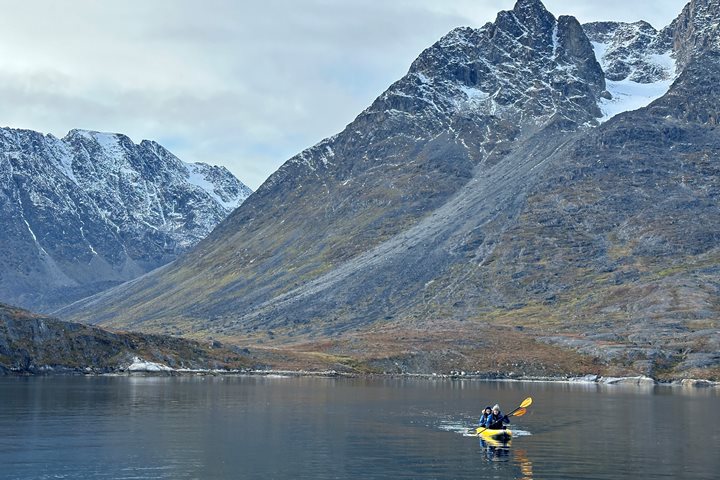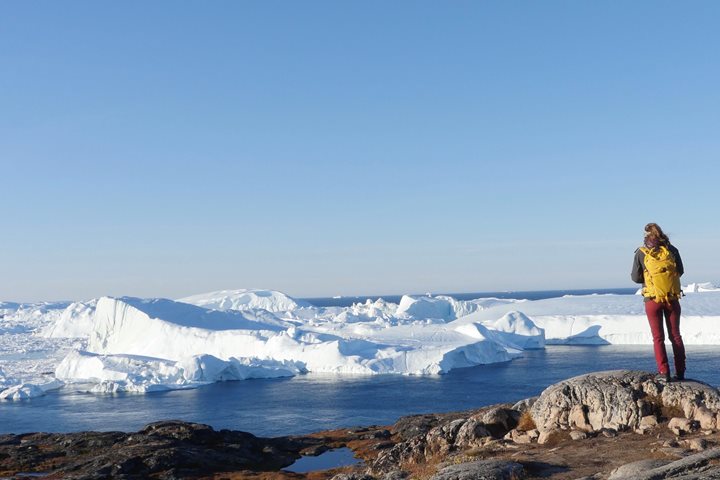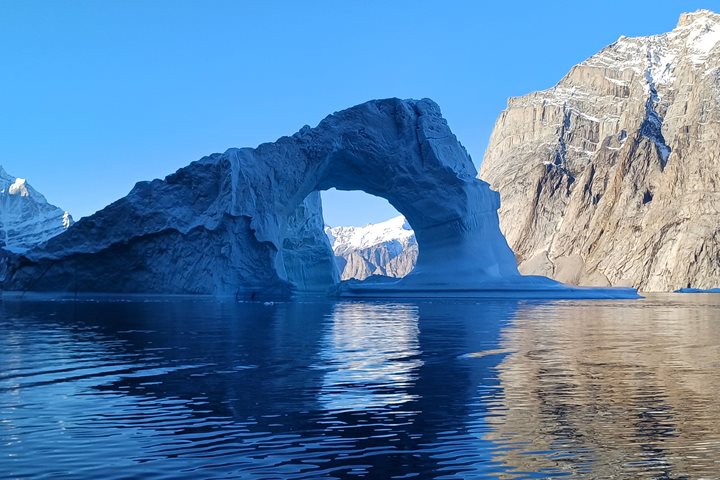We woke early to beautiful light. Patches of sea ice surrounded us and the rising sun gave each piece a unique glow. Before breakfast many of us had already spent an hour gazing across the water and over to the distinctive cliffs of Devon Island. Ice navigation was tricky; we had two large patches of solid ice to skirt around, which gave us plenty of time to look for wildlife.
We had time to hear Eva Aariak speak about the development of Nunavut and the syllabic writing system used in eastern Baffin, before we stopped for a polar bear!
The bear was lying on its side on the ice with his head curled under one foreleg. Its paws stuck out to one side, stacked over each other, which managed to make the ice look cozy. We approached very slowly, and the bear stayed put. He looked over at us a few times before laying out on his front with his eyes looking straight toward us.
By early afternoon we had reached Beechey Island. Tom set us up for the visit with a presentation about the history of exploration in this part of the world, but nothing can really prepare a person for Beechey Island.
This is where the famous Franklin Expedition spent its first winter (1845-6) and also where three of the sailors died and were buried. The bay is now named for his ships: the Erebus and the Terror. Beechey Island has both a majesty and a bleakness to it. The curved beach rises back toward a cliff face, and the sparse plant life barely shows up amongst the small rocks that cover the landscape.
Almost half of us climbed up to the cliff top where we could look down on our ship and imagine the history that played out here. From up high, we looked down on the ruin of Northumberland House, a depot that played a role in the many attempts to find and rescue Franklin.
This place feels wild, and it’s hard to imagine how the men who lived and died here must have felt.









